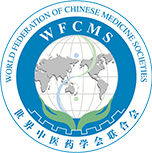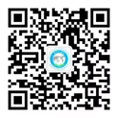A review: The phytochemistry, pharmacology, and pharmacokinetics of Curcumae Longae Rhizoma (Turmeric)
Release time: Sept 19,2022
Reading volume: 845
Abstract:
Curcumae Longae Rhizoma (CLR) is the rhizome of Curcuma longa L. Pharmacological studies show that CLR can be used to treat cervical cancer, lung cancer, lupus nephritis, and other conditions. In this paper, we review botany, traditional application, phytochemistry, pharmacological activity, and pharmacokinetics of CLR. The literature from 1981 to date was entirely collected from online databases, such as Web of Science, Google Scholar, China Academic Journals full-text database (CNKI), Wiley, Springer, PubMed, and ScienceDirect. The data were also obtained from ancient books, theses and dissertations, and Flora Reipublicae Popularis Sinicae. There are a total of 275 compounds that have been isolated from CLR, including phenolic compounds, volatile oils, and others. The therapeutic effect of turmeric has been expanded from breaking blood and activating qi in the traditional sense to antitumor, anti-inflammatory, antioxidation, neuroprotection, antibacterial, hypolipidemic effects, and other benefits. However, the active ingredients and mechanisms of action related to relieving disease remain ill defined, which requires more in-depth research and verification at a clinical level.
Keywords:
Botany, Curcumae Longae Rhizoma, pharmacokinetics, pharmacology, phytochemistry, traditional uses
Curcumae Longae Rhizoma (CLR) is the rhizome of Curcuma longa L. Pharmacological studies show that CLR can be used to treat cervical cancer, lung cancer, lupus nephritis, and other conditions. In this paper, we review botany, traditional application, phytochemistry, pharmacological activity, and pharmacokinetics of CLR. The literature from 1981 to date was entirely collected from online databases, such as Web of Science, Google Scholar, China Academic Journals full-text database (CNKI), Wiley, Springer, PubMed, and ScienceDirect. The data were also obtained from ancient books, theses and dissertations, and Flora Reipublicae Popularis Sinicae. There are a total of 275 compounds that have been isolated from CLR, including phenolic compounds, volatile oils, and others. The therapeutic effect of turmeric has been expanded from breaking blood and activating qi in the traditional sense to antitumor, anti-inflammatory, antioxidation, neuroprotection, antibacterial, hypolipidemic effects, and other benefits. However, the active ingredients and mechanisms of action related to relieving disease remain ill defined, which requires more in-depth research and verification at a clinical level.
Keywords:
Botany, Curcumae Longae Rhizoma, pharmacokinetics, pharmacology, phytochemistry, traditional uses

